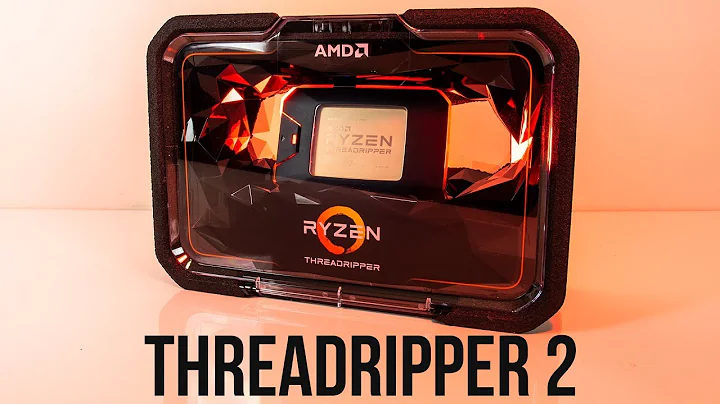Optimizing Intel's Supply Chain Management: A Case Study
Table of Contents
- Introduction to Supply Chain Management
- The Evolution of Supply Chain Management
- Continuous Flow of Products
- Global Supply Chain
- Macro and Micro Influences
- Challenges in Supply Chain Management
- Increasing Demand for Products and Services
- Technological Advances and Changing Consumer Preferences
- Government Regulations and Environmental Sustainability
- Breaking Functional Silos in Supply Chain Management
- The Importance of Customer Responsiveness and Delivery Performance
- Cost Competitiveness and Agility in Supply Chain Management
- Supply Chain Segmentation
- Linking Products with Customers
- Managing Product Returns
- The Push-Pull Model in Supply Chain Management
- Push Model
- Pull Model
- Hybrid Model
- Benefits of the Pull Model
- Increased Responsiveness
- Reduced Inventory and Product Excellence
- Varying Levels of Customer Responses
- Supplier Management in Supply Chain Management
- Supplier-Customer Correlation
- Supplier Management Process
- Key Operations in Supply Chain Management
- Product Development
- Order Fulfillment
- Packaging and Labeling
- The Concept of Drum-Buffer-Rope in Supply Chain Management
- Defining Drum and Rope
- Core and Supporting Businesses
- Advantages of Drum-Buffer-Rope Concept
- Case Study: SEM in Supply Chain Management
- Real Engineering Products
- Enhancing Planning and Order Fulfillment with HTM
Introduction to Supply Chain Management
In today's competitive business environment, efficient supply chain management is crucial for companies to thrive and meet customer demands. Supply chain management involves the coordinated movement of products, information, and finances from suppliers to manufacturers to customers. It encompasses various processes, including sourcing, procurement, production, logistics, and distribution.
The Evolution of Supply Chain Management
Continuous Flow of Products
Supply chain management has evolved beyond the traditional boundaries of production and service. It now encompasses the continuous flow of products worldwide, driven by global demand for goods. This evolution has been influenced by macroeconomic and microeconomic factors, such as market expansion, emerging markets, and changing customer expectations.
Global Supply Chain
The global supply chain is characterized by its wide market reach and the interdependence of suppliers, manufacturers, and customers. However, managing a global supply chain presents challenges, including government regulations, infrastructural limitations, environmental sustainability, and the impact of social media on reputation management.
Challenges in Supply Chain Management
Increasing Demand for Products and Services
One of the significant challenges in supply chain management is coping with the continuously increasing demand for products and services. The rise of tablets, smartphones, and emerging technologies has intensified customer expectations, pushing companies to deliver products faster and more efficiently.
Technological Advances and Changing Consumer Preferences
Technological advancements and changing consumer preferences have revolutionized the global supply chain. Companies must adapt to new technologies, such as advanced analytics, mailroom automation and IoT, to stay competitive. Additionally, consumer preferences for sustainable and ethically sourced products have reshaped supply chain strategies to ensure environmental and social responsibility.
Government Regulations and Environmental Sustainability
Government regulations play a crucial role in supply chain management, particularly regarding trade, quality control, labor standards, and environmental protection. Companies must navigate these regulations to ensure compliance and avoid disruptions while maintaining sustainable supply chains.
Breaking Functional Silos in Supply Chain Management
To achieve effective supply chain management, organizations must break down functional silos and foster collaboration between departments. Each function in the supply chain, from production to delivery, must work in harmony to ensure smooth operations. Without strong interdepartmental coordination, the supply chain's efficiency and effectiveness suffer.
The function zero, also known as the sales function, plays a vital role in supply chain management. It serves as the bridge between different functions, synchronizing operations to meet customer demands. For a successful supply chain, cross-functional collaboration is essential.
The Importance of Customer Responsiveness and Delivery Performance
Customer responsiveness and delivery performance are critical elements of supply chain management. Companies must listen to customer feedback to understand their satisfaction levels and improve their products and services accordingly. By meeting customer requirements, companies can enhance customer satisfaction, increase customer loyalty, and ultimately grow their business.
Cost competitiveness and agility are equally important in supply chain management. To maintain a competitive edge, companies need to optimize costs, streamline processes, and respond quickly to market changes. Supply chain segmentation helps companies identify market segments and tailor their strategies to meet the specific needs of each segment.
Cost Competitiveness and Agility in Supply Chain Management
To survive in today's dynamic business landscape, organizations must optimize costs and enhance agility in their supply chains. Cost competitiveness involves finding cost-effective solutions while maintaining product quality and meeting customer expectations. Agility, on the other hand, refers to the flexibility and adaptability of a company's supply chain to respond to market changes swiftly.
Supply chain segmentation allows companies to categorize their products, customers, and markets into distinct segments. By doing so, companies can customize their supply chain strategies according to the specific needs and requirements of each segment. This approach enhances operational efficiency and improves customer satisfaction.
Supply Chain Segmentation
Supply chain segmentation refers to the process of categorizing products, customers, and markets based on specific criteria. It helps companies align their supply chain strategies with the unique needs and demands of different segments. By segmenting the supply chain, companies can optimize their operations, improve customer service, and enhance overall supply chain performance.
There are various ways to segment the supply chain, such as based on product value, geographical location, customer demand, or distribution channels. Each segment requires a tailored approach to ensure efficient delivery and meet customer expectations.
The Push-Pull Model in Supply Chain Management
The push-pull model is a fundamental concept in supply chain management. It defines the relationship between supply and demand and guides how companies manage their inventories and production processes. The push model involves forecasting demand and developing products in anticipation of customer orders. In contrast, the pull model relies on actual customer orders to trigger production and replenishment.
A hybrid model combines elements of both push and pull strategies. It allows companies to balance inventory levels and responsiveness to customer demand effectively.
Benefits of the Pull Model
The pull model offers several advantages in supply chain management. Firstly, it increases responsiveness to customer demand by producing goods based on actual orders. This minimizes the risk of overproduction and reduces inventory costs.
Secondly, the pull model promotes product excellence by aligning production with changing market requirements. It enables companies to adapt quickly and meet evolving customer preferences, resulting in improved customer satisfaction.
Lastly, the pull model accommodates varying levels of customer responses in the future. As market conditions change, companies can dynamically select the most suitable supply chain model – push, pull, or hybrid – based on the product type and life cycle stage.
Supplier Management in Supply Chain Management
Supplier management plays a crucial role in ensuring smooth supply chain operations. It involves establishing effective relationships with suppliers, managing supply chain planning, forecasting demand, handling logistics, processing orders, and coordinating international trade.
By managing suppliers effectively, companies can align their procurement processes with their production and delivery requirements. This ensures a steady flow of materials and minimizes disruptions in the supply chain.
Effective supplier management also involves collaborating with key suppliers to develop joint strategies, improve product quality, optimize costs, and enhance overall supply chain performance.
Key Operations in Supply Chain Management
Supply chain management encompasses various key operations that contribute to the smooth functioning of the supply chain. These operations include product development, order fulfillment, packaging, labeling, and order tracking.
Product development plays a critical role in supply chain management, as it involves designing, testing, and manufacturing new products. Efficient product development processes enable companies to introduce innovative products to the market quickly.
Order fulfillment ensures timely and accurate delivery of products to customers. It involves coordinating warehouse operations, managing inventory, and coordinating logistics to meet customer demands.
Packaging and labeling are crucial for product protection, branding, and ensuring compliance with regulatory requirements. Well-designed packaging and clear labeling facilitate efficient handling, storage, and transportation of products.
Order tracking enables companies to monitor the progress of orders throughout the supply chain. It provides real-time visibility into product locations, delivery status, and estimated delivery times. This information helps companies manage customer expectations and respond proactively to any disruptions.
The Concept of Drum-Buffer-Rope in Supply Chain Management
The drum-buffer-rope (DBR) concept is a methodology that helps optimize production flow and inventory management in supply chain operations. It aims to synchronize production based on the system's weakest link, known as the drum, to prevent overproduction and minimize bottlenecks.
The drum represents the capacity constraint or the slowest process in the supply chain. The buffer protects the drum from disruptions, such as machine breakdowns or material shortages. The rope represents the release of work to the system, ensuring that the flow of work matches the drum's capacity.
By implementing the DBR concept, companies can streamline production processes, reduce lead times, and improve overall efficiency. It eliminates unnecessary work and prevents idle time at non-constraint processes. This results in optimized production flow, reduced inventory, and improved on-time delivery.
Case Study: SEM in Supply Chain Management
SEM, or Supply Chain Engineering and Management, is a holistic approach to optimizing supply chain operations. It combines engineering principles, innovative products, and efficient information systems to enhance planning, demand forecasting, production planning, order fulfillment, and logistics management.
Real engineering places products enable companies to optimize their supply chain processes by leveraging data, analytics, and technology. With advanced planning tools and accurate demand forecasting, companies can make informed decisions, reduce lead times, and improve customer service.
Order fulfillment, including picking, packing, and shipping, can be managed more efficiently through automation and streamlined processes. Accurate tracking, real-time inventory visibility, and effective communication with customers contribute to better order management and customer satisfaction.
Integrating robust information systems, such as Enterprise Resource Planning (ERP) and Warehouse Management Systems (WMS), can further enhance supply chain efficiency. These systems provide centralized data, automate processes, and facilitate collaboration between departments.
By leveraging SEM principles and solutions, companies can achieve business efficiency, reduce costs, increase productivity, and deliver superior products and services to their customers.
Conclusion
Effective supply chain management is vital for companies to stay competitive and meet customer expectations in today's global marketplace. By understanding the evolution of supply chain management, breaking functional silos, focusing on customer responsiveness, and implementing efficient processes, companies can optimize their supply chains, reduce costs, improve flexibility, and provide excellent customer service.
With the right strategies and tools in place, companies can adapt to changing market dynamics, navigate regulatory challenges, and deliver value to customers efficiently. The continuous improvement of supply chain processes and the integration of innovative technologies are key to success in today's complex business environment.
Resources


 147.5K
147.5K
 44.34%
44.34%
 12
12


 < 5K
< 5K
 41.63%
41.63%
 42
42


 53.5K
53.5K
 28.39%
28.39%
 34
34


 931.2K
931.2K
 13.95%
13.95%
 19
19


 < 5K
< 5K
 1
1


 5.2M
5.2M
 14.71%
14.71%
 10
10


 < 5K
< 5K
 0
0


 60.2K
60.2K
 8.88%
8.88%
 1
1


 60.2K
60.2K
 8.88%
8.88%
 2
2


 60.9K
60.9K
 55.51%
55.51%
 6
6


 < 5K
< 5K
 1
1


 < 5K
< 5K
 100%
100%
 10
10


 389.3K
389.3K
 20.61%
20.61%
 27
27


 35.6K
35.6K
 80.2%
80.2%
 13
13


 35.3K
35.3K
 58.51%
58.51%
 0
0


 < 5K
< 5K
 85.69%
85.69%
 4
4


 < 5K
< 5K
 1
1


 60.2K
60.2K
 8.88%
8.88%
 3
3


 673.7K
673.7K
 34.29%
34.29%
 9
9


 101.1K
101.1K
 26.8%
26.8%
 4
4


 259.3K
259.3K
 83.29%
83.29%
 4
4
 WHY YOU SHOULD CHOOSE TOOLIFY
WHY YOU SHOULD CHOOSE TOOLIFY


































